Reunion redux
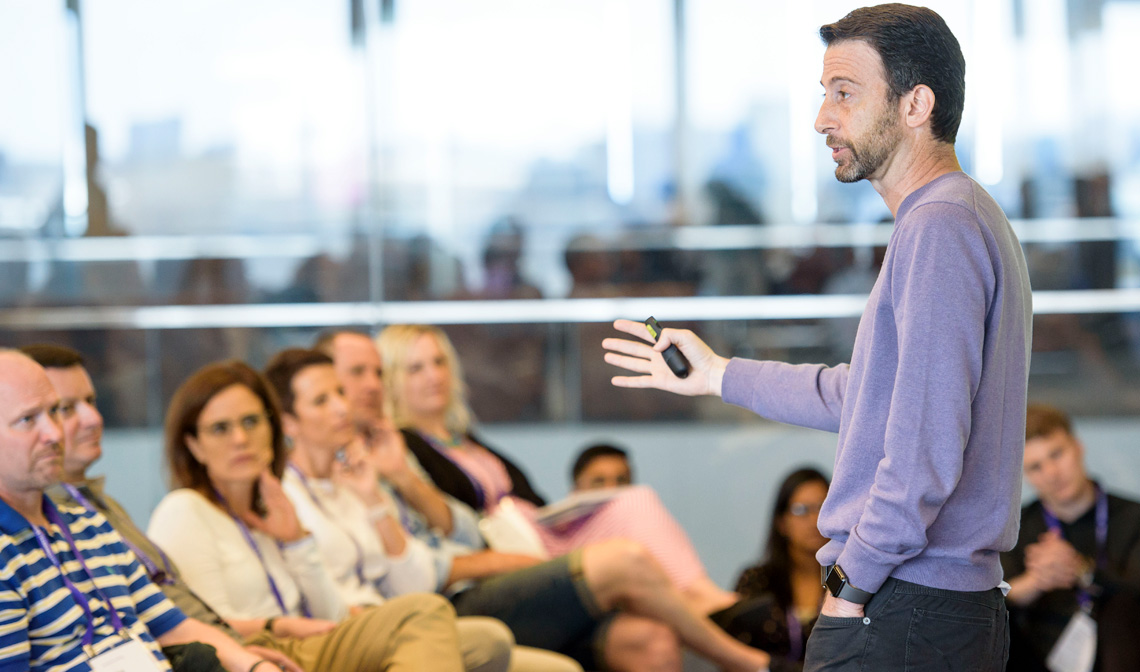
Professor Eli Finkel shares insights from his new book during Reunion
Cutting-edge education doesn't end at graduation. Alumni attending Reunion 2018 drew inspiration and insight from thought leadership sessions with the Kellogg School's world-renowned faculty and guest speakers.
Last May, Reunion 2018 featured more than 30 Kellogg faculty and guest speakers presenting inspirational thought leadership sessions. Here's a sample of their remarks:
The all-or-nothing marriage
Eli Finkel, Professor of Psychology and Management and Organizations
Finkel shared insights from his book of the same title, which features research-based strategies to strengthen marital relationships.
Before the Industrial Revolution, Finkel explained, life was fragile, and marriage was largely an economic arrangement to provide survival and sustenance; spouses were workmates. But with the rise of industrialization and modernity, married people have expected more and more from marriage. It has become a "self-expressive" life partnership, not only for survival but also for love and fulfillment along with higher-level needs: profound happiness, serenity and enrichment. "We like marriage to bring out the best in us," Finkel said, "and help us grow into an authentic, real, true, ideal version of ourselves."
Finkel offered a few research-based strategies to make marriages better:
- Spend more time together, especially doing new, exciting activities.
- Look at your marriage with new, generous eyes. After an argument with your spouse, write about the argument from the perspective of an objective third party.
- Recalibrate your expectations. Enjoy the "good enough" marriage — can you enjoy sitting together with your spouse and having coffee in the morning? If so, isn't that a pretty good deal?
As Finkel discusses in his book, it's harder today than in the past to have a fulfilling marriage, but today's best marriages are better than the best marriages from earlier eras. If we're wise — and lucky — we can achieve a level of marital connection that would have been out of reach in the 1950s.
Creativity & innovation in the 21st century
Ben Jones, Professor of Strategy
Innovation is often thought of as a young person's game. But if we look at the evidence, some of the biggest ideas and advances of the 21st century are coming from those at age 40 and beyond.
Jones noted that fewer Nobel Prizes are being awarded to scientists under age 30, and most companies in America are, perhaps surprisingly, being started by people age 40 and older.
In recent years, innovation also is driven by teamwork. That, Jones said, is because of principles such as division of labor: Knowledge is too complex and specialized for any one person to know everything. For example, modern airliners function better than the Wright Brothers' first aircraft because teams of specialized engineers, materials scientists and other experts outperform solo tinkerers.
"We've seen an ever-increasing use of teams in the production of scientific articles or new patents," he said.
In essence, Jones said, innovation isn't just for young upstarts and lone geniuses. It's achieved with teamwork, experience and broad perspectives.
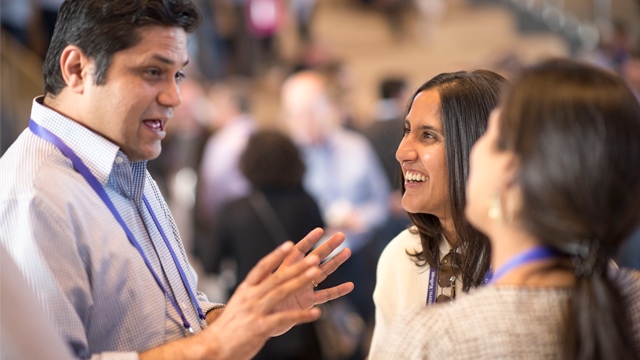
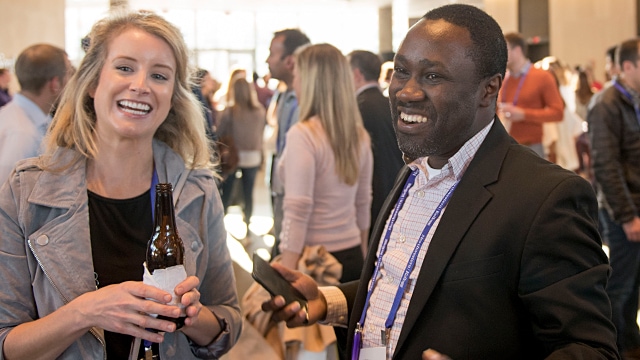
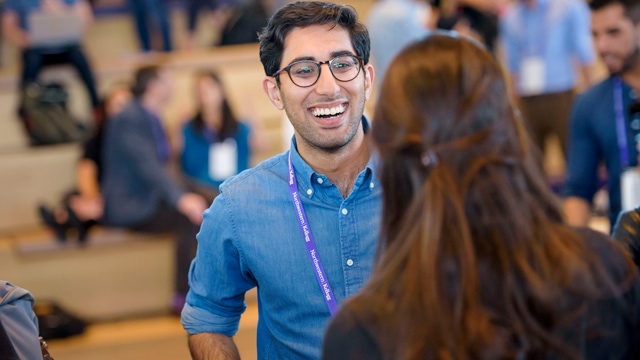
Kellogg and global health
Kara Palamountain, Research Associate, Professor and Lecturer
Palamountain shared some examples of how the Kellogg Global Health Initiative (GHI) helps improve access to health technologies in low- and middle-income countries. The GHI is a partnership between universities in the U.S. and in other countries, nonprofit donors and private industry.
In February 2018, GHI was part of a multidisciplinary global team that won a $15 million grant from the MacArthur Foundation to fund a project called Newborn Essential Solutions and Technologies (NEST) that intends to improve the survival of newborns in Africa. The project includes elements such as creating rugged technologies for newborn care, developing new distribution systems and educating clinicians and innovators in newborn health. Twelve of 17 proposed NEST technologies have been created or are in clinical testing, with the other five in the prototype stage.
Global health is a field of big challenges and inspiring success stories, Palamountain said. She described how in many countries, the mother-to-child HIV transmission rate has dropped from 35 percent to less than 1 percent, just by helping hospitals and public health systems become more effective at delivering antiretroviral drugs to pregnant women.
Many business principles can be brought to bear on strengthening countries' public health systems, Palamountain said, such as reducing the price of medications for poor patients, improving efficiency of medication distribution, advancing health technologies and more.
Palamountain also related how global health is about leveling the causes and the magnitude of disease burden across every country. For example, higher-income countries tend to have higher disease rates and death rates from illnesses such as cancer and heart disease; lower-income countries tend to have higher death rates from communicable diseases that are largely preventable with better health interventions.
There is a lot of entrepreneurship in global health. For example, Gradian Health Systems has invented a Universal Anesthesia Machine® that can safely deliver anesthesia to enable safer surgeries to be performed in any clinical environment, even without power and medical oxygen.
The Kellogg global health story is a powerful example of how Kellogg alums have the potential to use their skills to solve urgent global problems — building effective business solutions while doing good.
An intro to design thinking
David Schonthal, Clinical Associate Professor of Innovation and Entrepreneurship
Design thinking, Schonthal said, starts with looking at people and understanding their needs as users. "Design is not a verb. It's not an activity. It's a way of looking at the world and solving problems by putting the needs of people first," Schonthal said.
As an example, he noted that a financial services company noticed that some customers were writing checks that were a few dollars more than the amount owed to their utility companies each month; the customer was making a small down payment on the next month's bill. This insight made the bank recognize that its products needed to go beyond the basic need of paying bills and help customers meet the higher-level need of getting ahead.
Experience design is another aspect of design thinking, Schonthal said. GE Healthcare Innovation architect Doug Dietz's team redesigned the experience of using an MRI machine for pediatric patients. Instead of making it a clinical experience of being strapped to a table and pushed into a scary tube, the team made it a fun mission about being loaded onto a pirate ship. Patient satisfaction scores went up to 90 percent, and the rates of children who needed anesthesia for the MRI dropped significantly. GE even made a new "Adventure Series" of MRI machines, with colorful designs.
According to Schonthal, if design thinking can make pediatric MRIs fun, imagine what it can do for your business!
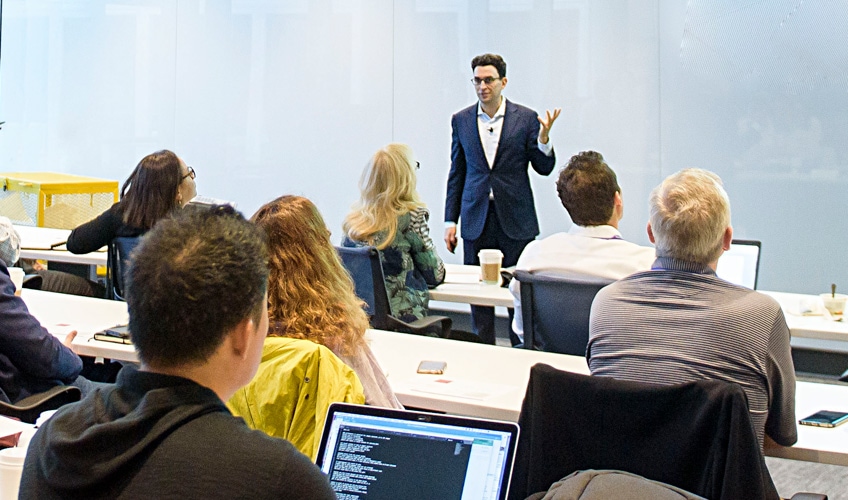
Professor Steve Franconeri discusses the power of data visualization
Persuasive data visualization
Steve Franconeri, Professor of Leadership
Every day, business leaders need to understand and present data, and use data-backed arguments. "Statistics and benchmarks squeeze whole datasets into single numbers. That throws away critical information," Franconeri said. Instead, you can use your vast visual system, "around 40 percent of the 80 billion neurons in your head," to crunch far more powerful analytics.
As an example, Franconeri showed a set of typical business reporting benchmarks suggesting that one group's performance beat another. But after unpacking those numbers into a visualization, it was clear that the story was packed with discrepancies and uncertainties, as well as exciting new opportunities.
He emphasized that after analytics, when you've found a pattern that you want to quickly and persuasively communicate to an audience, you need to relay that information through their visual system.
One key tip was to use direct annotation instead of legends and bullets. An audience looks at a legend, and back to the chart, and repeats — this wastes your viewer's time. Instead, use direct labels on the graph elements (bars, etc.). Likewise, if bullet-point text describes a subset of values of your visualization, move the text of that bullet next to those data. Why make your audience work to link your argument to its supporting data?
Another tip was to use the right visualization for the right point: The same data set can generate different conclusions, depending on your choice of visualization. Franconeri demonstrated that a two-value bar chart was interpreted by people as "Dutch people are taller than Americans, on average." But displaying the same data in a line chart leads viewers to conclude that "People get taller as they become more Dutch."
To supercharge the ability to understand your data with analytics, or to communicate those conclusions persuasively, business leaders must learn the rules for effectively leveraging the powerful human visual system.
Becoming a values-based leader
Harry Kraemer, Clinical Professor of Strategy
Kraemer encouraged the audience to use leadership based in humility, true self-confidence, balance and self-reflection.
A few key characteristics of values-based leadership include drawing input and opinions from a broad array of perspectives; keeping things simple by looking at problems from a global, holistic viewpoint; and practicing the elusive art of common sense. "When I visit companies, I often remember Mark Twain's quote that 'Everything is common sense. The problem is, common sense is not common,'" Kraemer said.
Leadership has nothing to do with job titles, organizational structures and the number of direct reports, Kraemer said: "It's about influencing people, and that starts with relating to people." Leaders start being leaders long before they have anyone reporting to them.
Are you "in" the movie of your career or are you just "watching" the movie? His message: Kellogg alumni have an opportunity every day to be protagonists in their organizations' unfolding stories.
